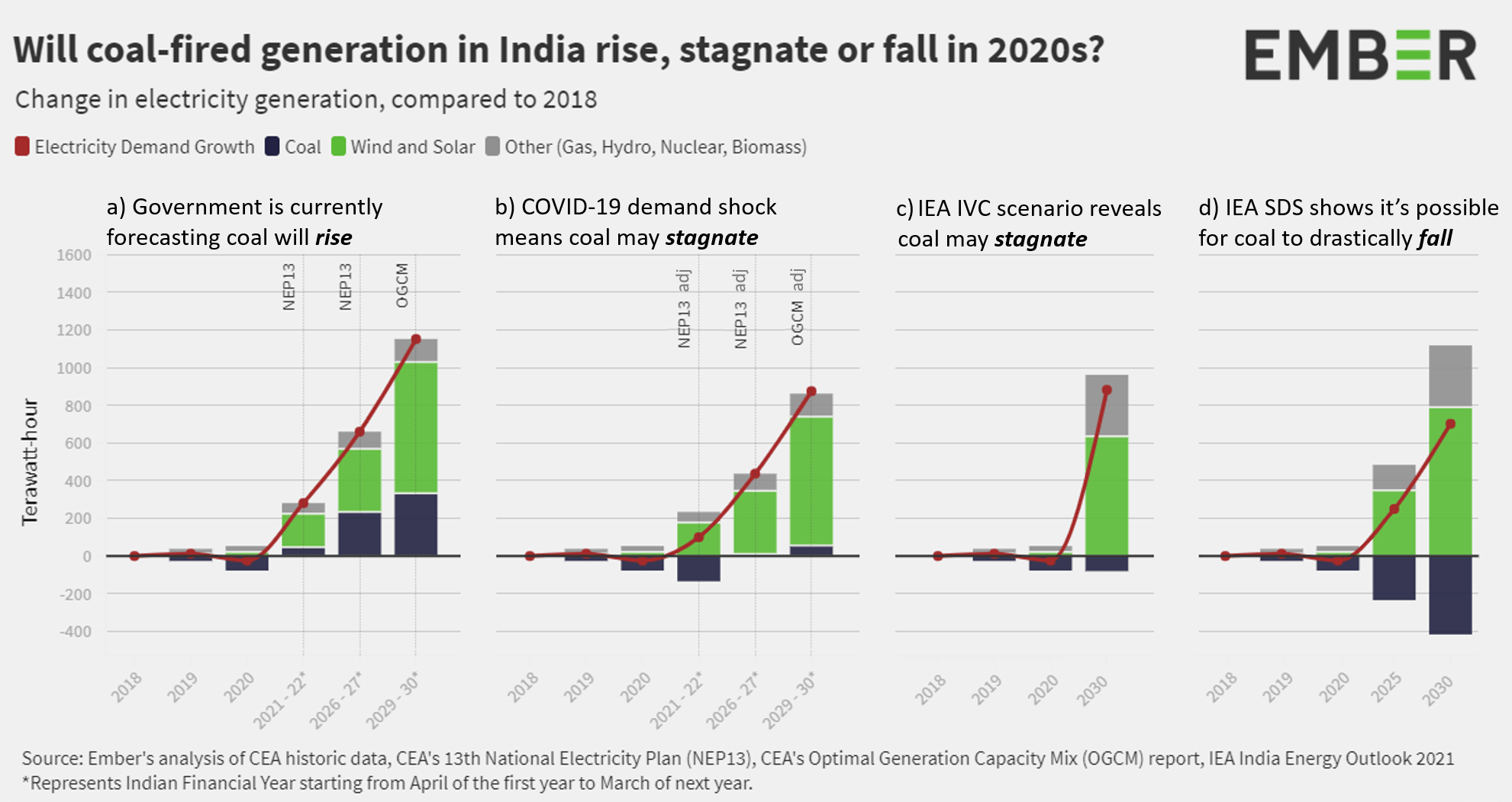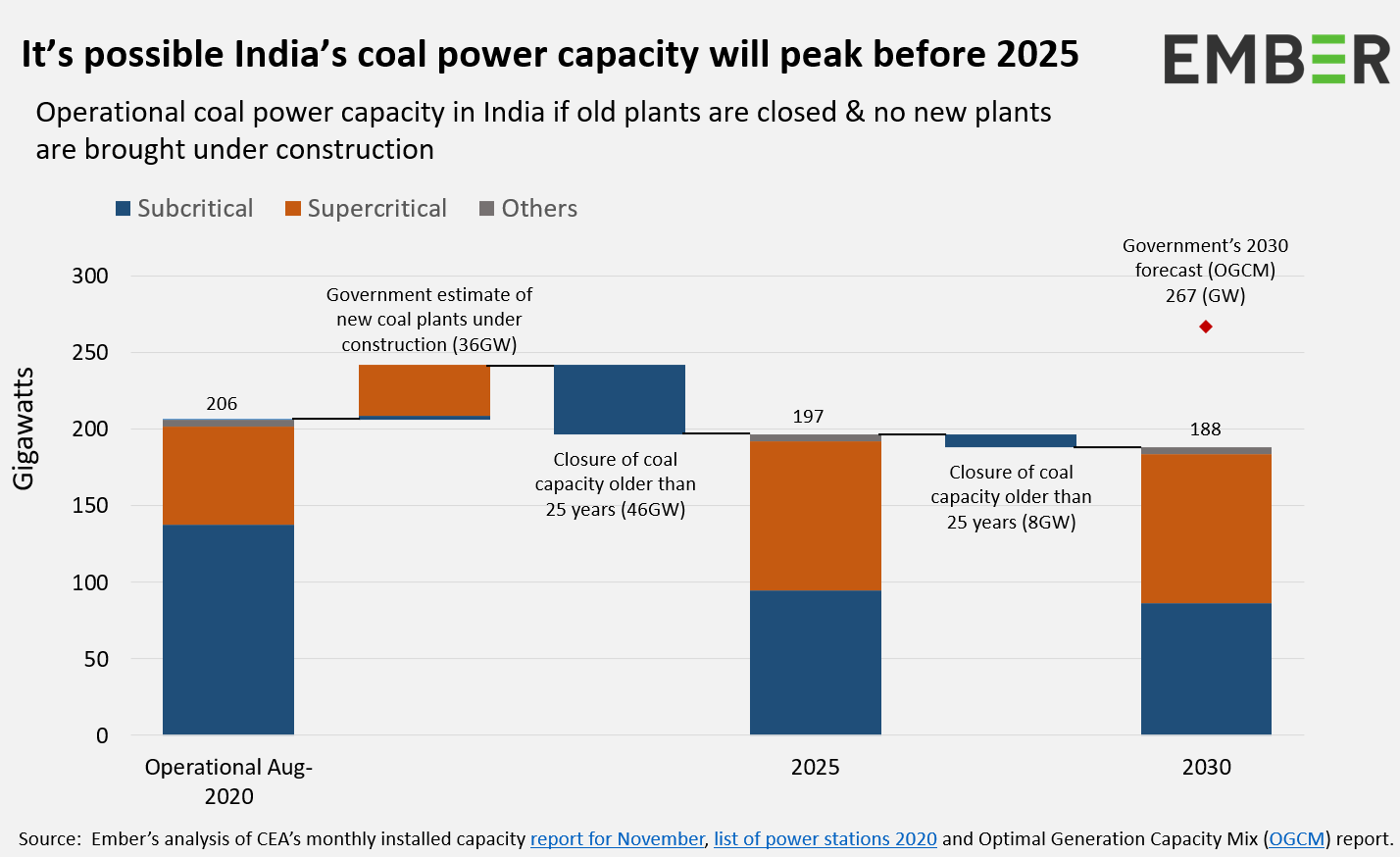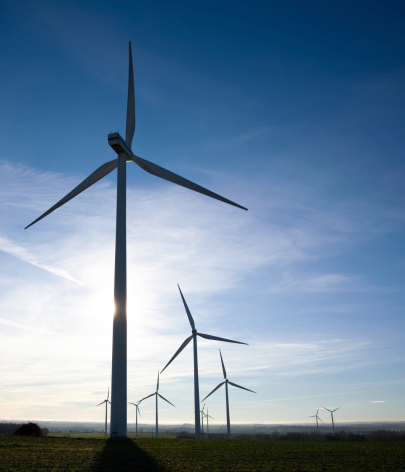About
The impact of India’s nationwide COVID-19 lockdown on its electricity demand in 2020 may prove to be a watershed moment in India’s coal-to-clean electricity transition story. Indeed, it brought coal, India’s largest source of electricity, under scrutiny as it took 100% of the brunt of the fall in electricity demand in the last year.
In this report, historical electricity generation data from the Central Electricity Authority (CEA) of India is analysed to understand how power generation in 2020 was different from previous years. Indian government forecasts from Optimal Generation Capacity Mix for 2029-30 (OGCM) report and 13th National Electricity Plan (NEP13) were studied to understand the Indian government’s projections for coal, wind and solar generation up to 2030 and how coal-fired generation forecasts may be impacted due to demand shock from COVID-19. This report also considers how India’s coal capacity could change in the next decade amid falling Plant Load Factor and decreasing financial viability of new plants.
Executive summary
India’s coal power may have already peaked, if it seizes the opportunity
As India recovers from the COVID-19 pandemic shock, the choices it makes for its power sector can make or break its coal-to-clean electricity transition in the next decade.
Senior Electricity Policy Analyst – Asia, Ember
It seems increasingly likely that coal power will plateau in the 2020s in India. But, there is still a risk that India could be knocked off course. As India recovers from the COVID-19 pandemic shock, the choices it makes in the next decade will make or break its coal-to-clean electricity transition. Now the focus must be on building enough new solar and wind capacity to meet increasing electricity demand. That would mean the new wave of coal plants coming online in the next few years can be used to replace India’s oldest and dirtiest coal plants. As the world’s second-largest coal generator, all eyes are on India in this crucial decade of climate action.

Coal-fired generation falls for second year in a row
The historical peak of India’s coal-fired generation was seen in 2018
If coal-fired generation can peak, then can coal power capacity also peak?
It's possible India's coal power capacity will peak within the next 5 years
It is possible that India’s on-grid coal capacity will actually peak within the next 5 years, if India delivers on its commitments to close older coal power plants and does not build new coal power plants beyond those currently under construction.
India’s coal plant load factor (PLF) fell to a record low level of 53% in 2020, while coal-fired generation fell and coal-fired capacity increased. Therefore, the current coal fleet is already running the risk of turning into loss-making stranded assets.
Conclusion
Ensuring the peak of coal power in India
As India recovers from the COVID-19 pandemic shock, the choices it makes for its power sector can make or break its coal-to-clean electricity transition in the next decade.
This report makes the following recommendations to ensure that coal-fired generation has already peaked in India:
- Focus on removing barriers to ensure wind and solar targets are met
- Moratorium on building new coal power plants
- Incentivise closure of old coal power plants
- Moratorium on new coal mine auctions
Supporting Material
Acknowledgements
IEEFA, CREA, TERI and Climate Risk Horizons
Report DesignWilf Lytton







